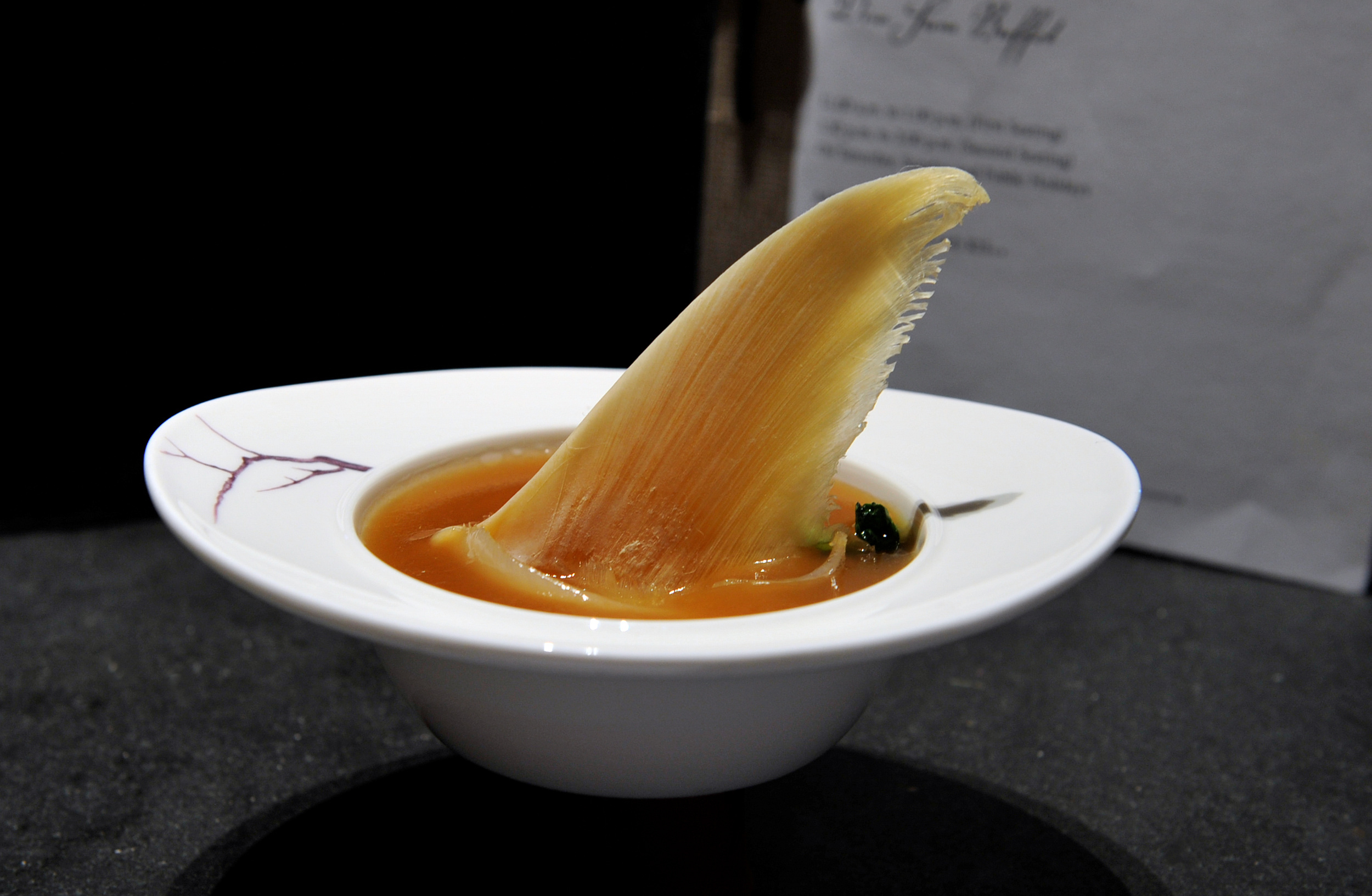Shark's fin trade continues despite more awareness about shark conservation
Sign up now: Get ST's newsletters delivered to your inbox

There is evidence of increasing support from the consumers to limit consumption of shark's fin.
PHOTO: THE STAR
Yeo Shu Hui
Follow topic:
SINGAPORE - Despite the campaigns against the consumption and trade of shark's fin in recent years, its trade in Singapore climbed from 2017 to 2019 before the Covid-19 hit.
Pre-pandemic local consumption, however, remained relatively constant.
Imports of shark's fin climbed from 2,700 tonnes in 2017, to 3,000 tonnes in 2018, and 3,500 tonnes in 2019. Spain, Namibia and Taiwan were the top suppliers.
This slipped back down to 2,700 tonnes last year, according to data from the Singapore Food Agency (SFA).
Shark's fin exports also rose year on year till the pandemic struck, rising from 2,400 tonnes in 2017 to 3,300 tonnes in 2019.
Pre-Covid local consumption - which SFA derives by deducting the exported amount from imports - dropped from 200 tonnes in 2017 to 100 tonnes in 2018, but rose again to 200 tonnes the following year.
All figures are rounded to the nearest hundreds and may not tally due to rounding.
Based on trade data, 2020 saw local consumption spike to 800 tonnes.
However, it is incorrect to assume increased domestic consumption based on trade data, said Mr Chester Gan, responsible seafood programme officer at World Wide Fund For Nature (WWF) - Singapore.
He said: "The apparent spike in consumption could be due to trade disruptions from Covid-19. For instance, Singapore traders could have imported significant volumes of shark fin for re-export but were unable to do so due to supply chain issues."
“However, without in-depth interviews and studies involving the stakeholders in the shark’s fin supply chain... we are unable to provide a definitive response,” he added.
“However, without in-depth interviews and studies involving the stakeholders in the shark’s fin supply chain... we are unable to provide a definitive response,” he added.
Importers and exporters, as well as several restaurants contacted by The Straits Times have declined comment.
Professor Paul Teng, adjunct senior fellow at the S. Rajaratnam School of International Studies at Nanyang Technological University, said: "Export quantity of shark's fin in 2020 has gone down from 2019's, which is likely due to pandemic-led supply chain issues as borders around the world shut.
"As dried or canned shark's fin could last for several years if processed and stored properly, it is possible that the 800 tonnes of shark's fin could still remain as inventory in Singapore."
Online shark's fin sellers told ST that the shelf life of canned shark's fin is two years, while frozen shark's fin can be kept for up to six months.
Eating shark's fin, a traditional Chinese delicacy that is popular at banquets, has become controversial in recent decades as the species was driven to endangerment and cruel practices of finning sharks that were tossed back alive - to their certain death - into the sea were exposed.
A 2017 report by WWF and Traffic, a wildlife-trade monitoring network, found that Singapore is the world's second largest shark's fin trader by value after Hong Kong, with imports standing at $65 million and exports at $50.4 million.
WWF and Traffic said that Singapore has an important part to play in tackling the crisis and urged the authorities to adopt stricter regulations. The report set off a new round of discussions on shark's fin in Singapore.
Mr Gan said: "Trade in shark's fin is concerning as sharks are keystone species in many marine ecosystems. They play a vital role in maintaining the equilibrium of these ecosystems and are essential to the well-being of many coastal communities, as well as the overall health of our oceans."

ST FILE PHOTO
Over the years, many establishments in the food and hospitality industry have taken shark's fin and other shark products off their menus.
However, some restaurants are still serving it as shark's fin soup or in pen cai, which is a traditional Chinese stew with layers of delicacy.
Founder and chef of Tonny Restaurant, Chef Tonny Chan, 60, said that the customers that ordered shark's fin dishes from him are regular customers, and are usually in their 40s or older.
"Our customers will mostly order shark's fin dishes during Chinese New Year or birthdays, because they want to have a feast," he said in Mandarin.
"Some children will also order shark's fin for their parents' birthdays as a treat," he added.
Mr Chan said that he realised an increase in sales for shark's fin between 2020 and last year and attributed the reason to the ease of safe management measures to allow eight people to dine in. However, he expects sales to fall again this year with the five-person group size limit.
Owner of Tasty Loong Restaurant, Chef Pung Lu Tin, 61, also said that customers who order shark's fin are usually aged 40 years and above.
He said in Mandarin: "Some of them have the habit of consuming shark's fin. They may also have a more traditional way of thinking that there is a need to serve shark's fin when treating someone to a meal, so that they look better. Others may also think that eating shark's fin is a way of enjoying a delicacy."
Mr Pung added that while some local companies will still order shark's fin when hosting guests, most of the larger corporations have especially requested not to include shark's fin in the dishes that they ordered nowadays.
Despite the continued demand, a study conducted by WWF-Singapore and Accenture in October 2020 showed that there is evidence of increasing support from the consumers to limit consumption of shark's fin, with most people willing to support Government legislation to decrease consumption and trade of the product.
Mr Gan added: "From our engagement with major hotels around shark's fin consumption, many establishments are recognising this shift and are taking actions by pledging to remove shark's fin from their menus."
- Additional reporting by Adeline Tan

